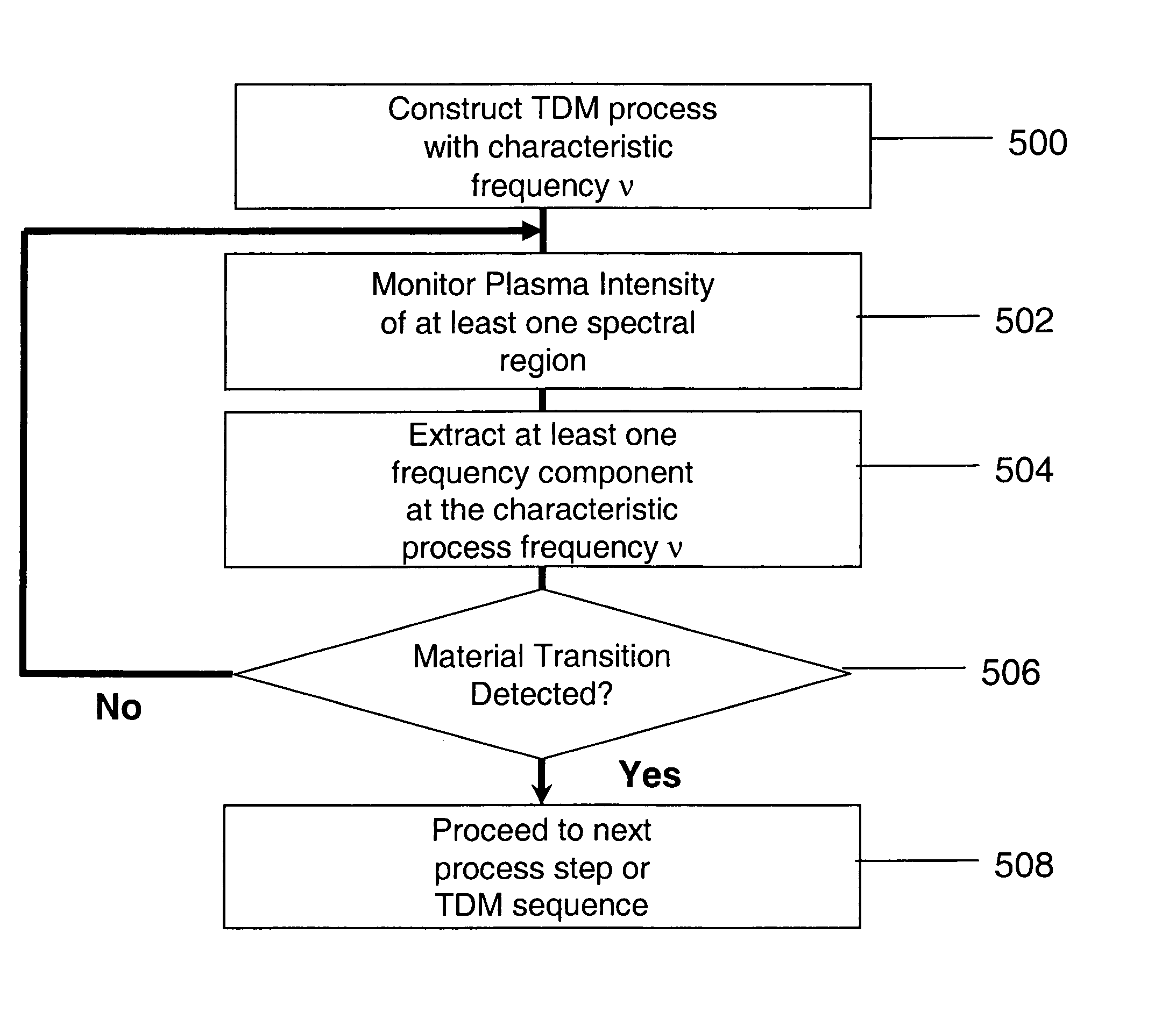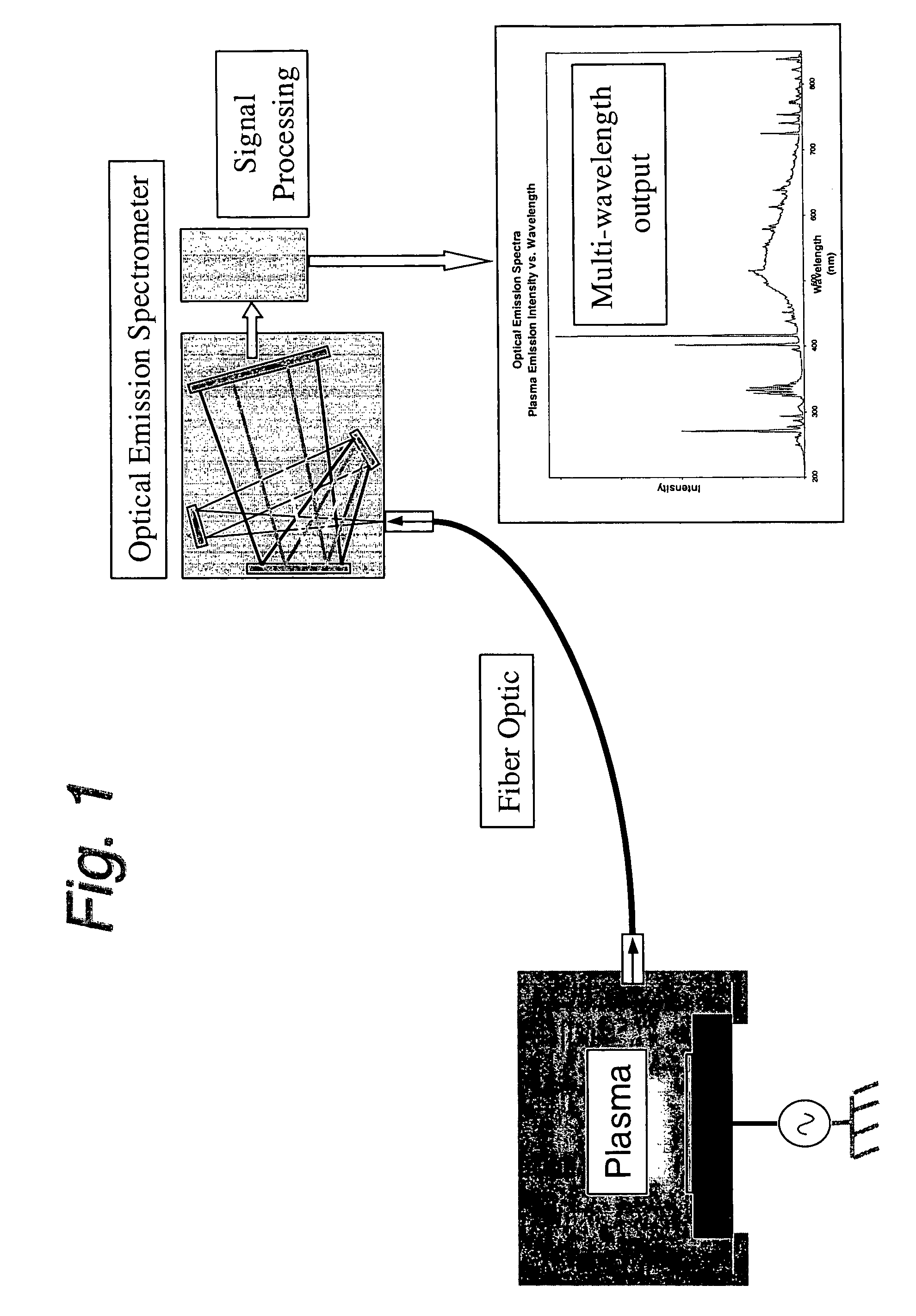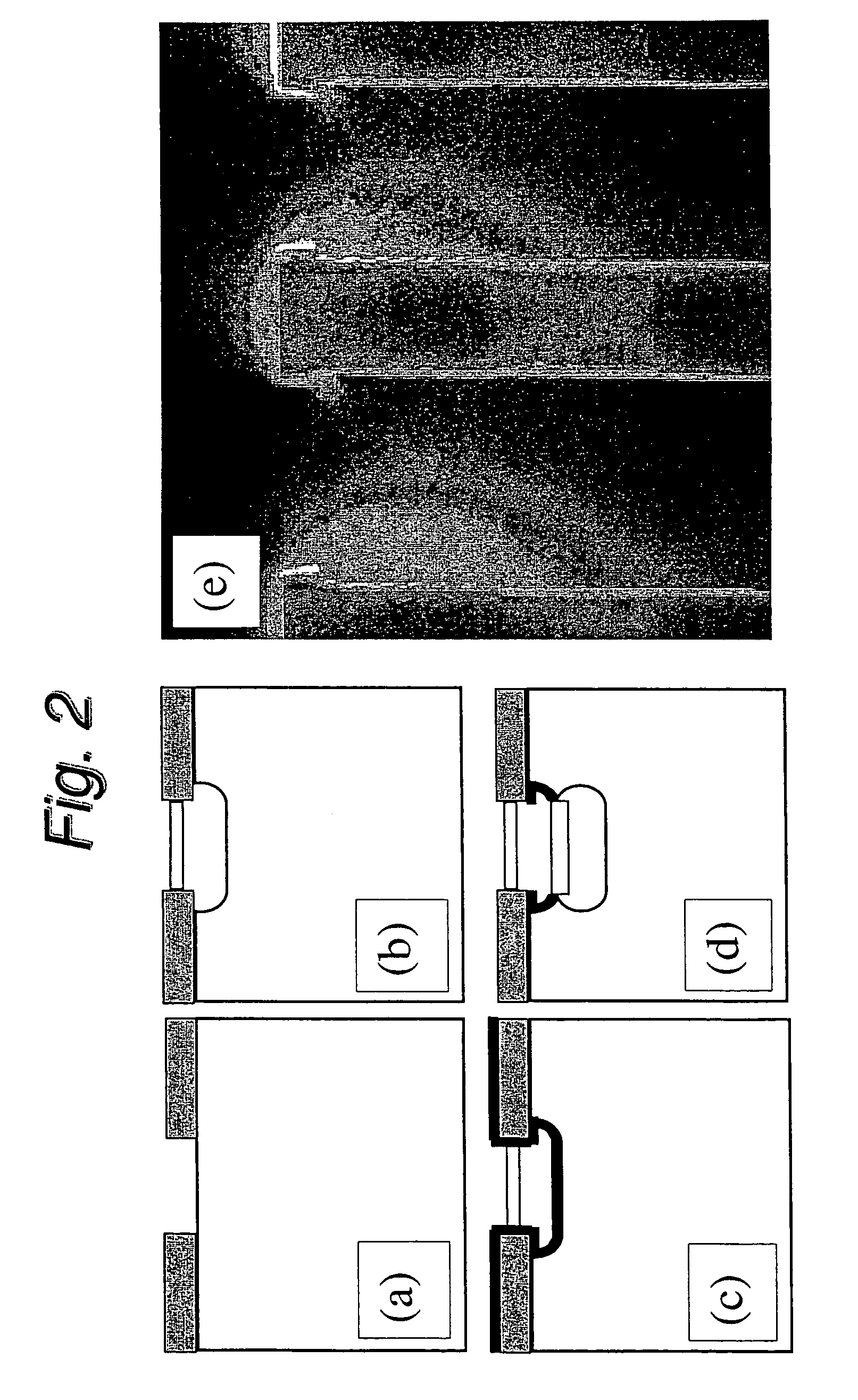End point detection in time division multiplexed etch processes
a time division multiplexing and etching technology, applied in semiconductor/solid-state device testing/measurement, instruments, fluid pressure measurement, etc., can solve the problem of reducing the thickness of the underlying stop layer, and affecting the effect of etching speed
- Summary
- Abstract
- Description
- Claims
- Application Information
AI Technical Summary
Benefits of technology
Problems solved by technology
Method used
Image
Examples
Embodiment Construction
[0037]A preferred embodiment of the present invention is directed toward a means of detecting the transition between different materials in a time division multiplexed (TDM) process by analyzing at least one wavelength component of the collected electromagnetic emission at a frequency corresponding to the frequency (ν) of the TDM process.
[0038]Due to the periodic and repeating nature of a TDM process, by design, the process has a number of characteristic frequencies associated with it. As an example, consider a two step TDM silicon etch process consisting of a 4 (four) second etch step and a 6 (six) second deposition step that are subsequently repeated a number of times (see Table I below).
[0039]
DepositionEtchSF6 Flowsccm0.5100C4F8 Flowsccm700.5Ar Flowsccm4040Pressuremtorr2223RF Bias Powerw112ICP Powerw10001000Step Timesec46
[0040]Note, the deposition and etch steps differ in chemistry, RF bias power and pressure resulting in significantly different emission spectra. Due to the repet...
PUM
| Property | Measurement | Unit |
|---|---|---|
| frequency | aaaaa | aaaaa |
| frequencies | aaaaa | aaaaa |
| total etch time | aaaaa | aaaaa |
Abstract
Description
Claims
Application Information
 Login to View More
Login to View More - R&D
- Intellectual Property
- Life Sciences
- Materials
- Tech Scout
- Unparalleled Data Quality
- Higher Quality Content
- 60% Fewer Hallucinations
Browse by: Latest US Patents, China's latest patents, Technical Efficacy Thesaurus, Application Domain, Technology Topic, Popular Technical Reports.
© 2025 PatSnap. All rights reserved.Legal|Privacy policy|Modern Slavery Act Transparency Statement|Sitemap|About US| Contact US: help@patsnap.com



